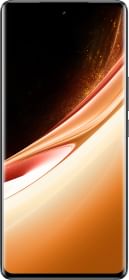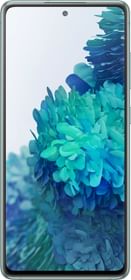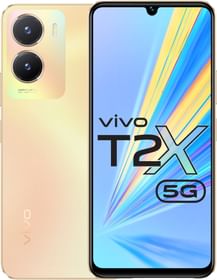The Nex is a very ambitious flagship from Vivo, which has off late been concentrating more on the premium segment. Apart from top of the line performance hardware, the Nex also includes a slew of exciting innovations like the staggering 92% screen-to-body ratio, in-display fingerprint sensor, and pop-up camera.
All of that makes it a very exciting flagship phone. But should you actually go ahead and buy Vivo Nex or is it just better to admire all the cutting-edge tech from afar?
We have been living with the Next for more than a week now and are ready to share our findings in our detailed Vivo Nex Review. Let’s get started.
Jump To:
- Vivo Nex Review – Specification
- Vivo Nex Review – Display
- Vivo Nex Review – Performance, Software and in-display sensor
- Vivo Nex Review – Camera Performance
- Vivo Nex Review – Screencasting Audio and Battery
- Vivo Nex Review – Verdict with Pros & Cons
Vivo Nex Specification
| Model | Vivo Nex |
| 6.59 inches FHD+ (2316 × 1080), AMOLED Display, 19.3:9 aspect ratio. 91.2% screen-to-body ratio | |
| Processor | Snapdragon 845 chipset, Adreno 630 GPU |
| RAM | 8GB LPDDR4 |
| Internal Storage | 128GB |
| Software | Android 8.1 (Oreo) with Functouch OS 4.0 |
| Primary Camera | 12MP+5MP; 4-axis OIS, Dual Pixel sensor |
| Secondary Camera | 8MP, f/2.0 aperture |
| Battery | 4000mAh, 22.5 Fast charger |
| Dimensions | 162 × 77 × 7.98mm; 199 grams |
| Others | Dual 4G VoLTE, dual-band Wi-Fi 802.11 ac (2.4GHz / 5GHz) 2×2 MIMO , Bluetooth 5 LE, GPS + GLONASS, USB 2.0, in-display fingerprint sensor |
| Price | Rs 44,990/- |
Vivo Nex Design and Build
The design is one of the most crucial elements of the Nex. After all, Vivo surely went through a great deal of trouble to push boundaries of that gorgeous notch-less full-view screen, which is mostly what’s there on the front.
The display size is 6.59-inches, but the actual phone isn’t as intimidating or unwieldy as the numbers suggest. Manufactures have been shaving off bezels and using fancy aspect ratios to offer more screen real estate without a proportional increase in phone size. But we’d also like someone to keep the screen size constant and go smaller. Anyways, the Nex is a well-designed phone, which is why we got used to the size in a week.
The handset has a glass back that curves towards the edges before it meets the metal side frame, and the shimmering holographic pattern further complements the futuristic theme it’s based on.

Throughout our review time, the Nex kept inspiring admiration from bystanders. But that was mostly because the continues screen is certainly more pleasing than the Notch-alternatives. And of course, the pop-up selfie camera surely adds a cool factor to the phone.
The camera pops up automatically as soon as you switch to the selfie shooter in the camera app. And the pop-up motion is punctuated with a barely-audible-yet-gratifying servo motor sound.
Unlike the Oppo Find X, which has all cameras on the slider, only the front camera retracts and pops up on the Nex. If you aren’t into selfies, you won’t be popping it up all that often (since there is no Face Unlock on the phone) but will still enjoy the convenience of the uninterrupted big screen.
Vivo enlists stats to give assurance of the durability of the slider mechanism, and we are inclined to believe them. We have no way to be sure, but it looks like the pop-up module should last the phone’s lifetime. If the phone drops, you’d be more worried about the glass body shattering than the selfie camera being damaged.

- Vivo Nex is a big phone with a glass body, but it’s still reasonably comfortable to operate.
- At 199 grams, it’s quite heavy. But the weight is well balanced and we got used to the heft pretty quick.
- Vivo bundles a premium case cover in the box, which is surprisingly resistant to daily wear and tear in spite its soft rubberized finish.
- Vivo is also offering one-time free screen replacement to Nex customers.
- A plastic scratch guard is pre-installed on both front and rear of the phone. The peeled off the rear one for it gave the phone an unfitting plastic feel.
- The pop-up camera raises durability concerns, but based on our initial experience, we feel its well implemented and should last the test of time. We have no way to be sure, though.
- The fingerprint sensor is present below the display, the ambient light sensor is present at the top center on the ever-so-thin bezel line above the screen.
- Vivo has also added a dedicated Google Lens/Assistant button, which means you can summon Google’s AI smarts even after you switch to gesture navigation.
- The ear-piece has been replaced by Vivo Screencast technology that coverts the entire screen into a speaker.
- The Type-C port and mono loudspeaker are at the bottom. The audio jack is up top.
Vivo Nex Display
Vivo Nex has an extra large AMOLED screen to relish. Perhaps the need for more space to house all the new technology while retaining a big battery is what drove Vivo to the choice of an extra-large screen.

The 6.59-inch panel (19.3:9 aspect ratio) benefits from AMOLED advantages like deep blacks and high contrast. It’s a premium, vivid screen, and the color calibration has also been improved compared to other Vivo phones we have reviewed in the past.
We aren’t particularly averse to the notch, but yes, the notch-less solution feels more appealing.
Navigation Gestures work fine and make the screen feel more immersive. The good thing is, if gestures are your thing, you will still be able to swiftly access recent apps from the control center and Google Assistant from the dedicated key on the left.

- The notch-less AMOLED panel Vivo is using is immersive and is well suited for gaming and for watching multimedia content.
- The dynamic range is wide and colors are very pleasant.
- The display is usable and legible outdoors, but maximum brightness could have been better.
- Zoom-to-fill works in the YouTube and other popular apps. The UI has been optimized to make use of the extra screen real estate.
- Vivo is using Gorilla Glass 5 to protect the screen.
Vivo Nex Performance, Software and in-display sensor
The Vivo Nex is powered by Qualcomm’s top-shelf mobile platform, the Snapdragon 845, paired with ample RAM (8GB) and Storage (128GB). Or in other words, raw performance power shouldn’t be your concern.
The UI (Android 8.1 Oreo-based) can utilize all the available brute force to its advantage and push flagship grade performance that justifies the price. The software is feature rich and capable of addressing most of our needs, but yes, the interface is a little too inspired by iOS. That shouldn’t come off as a surprise in 2018, but still kind of leaves a sour taste.

Most of what’s wrong with the UI design can be fixed by changing the launcher. The Funtouch OS keyboard is, however, a big pain and even when you switch to G Board, you will still have to deal with the default option while entering sensitive information like passwords (which is how it is on most phones, for security reasons).
The in-display fingerprint sensor on the Vivo Nex is slower than capacitive sensors but not as slow as to be jarring. We have always favored fingerprint sensors on the front and would still prefer the slightly slower in-display fingerprint sensor on Vivo Nex to rear-mounted sensors (or to no fingerprint sensors at all). Vivo says that it has improved in-display fingerprint sensor performance compared to X21.
If you don’t register your digit properly, the consistency will suffer. Once registered properly, we didn’t face any issues with the sensor consistency. The sensor is Always-on by default, but you can turn it off or even change unlock animation from settings. There is no Face Unlock on Vivo Nex.
- With Snapdragon 845 on board, the flawless performance doesn’t come off as a surprise.
- The Funtouch OS software is feature rich, based on Android 8.1 Oreo and a little too inspired by iOS.
- For those who are asking, Vivo Nex software allows you to change app launcher.
- The phone doesn’t have DRM L1 certificate and, hence, can not stream HD content from Nextflix.
- The phone supports Dual SIM Dual VoLTE. You can keep two 4G SIMs at a time and use data from either of the two.
- We found ourselves using the deicated key to launch Google lens and Google Assistant (long press) quite often. You can also turn it off from settings.
- The in-display fingerprint sensor is consistent when you register your digits properly. This could take more than one attempt, though.
- The fingerprint reader is slower than capacitive sensors, but we still quite like it.
Vivo Nex Camera Performance
Talking of specs, the Vivo Nex has a 12MP primary rear camera with f/1.8 aperture optics, dual PDAF, and 1.4-micrometer pixels. The sensor is accompanied by a 5MP secondary sensor that’s used for depth sensing. There is 4-Axis OIS and a dual tone LED flash as well.
The front fixed-focus selfie sensor has 8MP resolution and a f/2.0 aperture lens.

Now that we have talked about the specs, let’s get to the camera quality.
Considering the hardware used isn’t very different than what Vivo is using on the X21, we were pleasantly surprised to see significant improvement in image quality and performance consistency. The Vivo X21 cannot match up to 2018 flagships (most of which are more expensive), but common consumers won’t be disappointed.
The rear camera shows reliable metering and images clicked indoors and outdoors show a good amount of detail. However, the camera software can be a bit aggressive at times.






When you Zoom-in, you will notice some patchy noise areas and some over-sharpening. When the AI-scene-detect kicks in, colors turn out a bit over saturated.
We are quite satisfied with the selfie camera quality. The camera isn’t perfect and perhaps higher resolution would have resulted in better details, however, as things stand, the selfie images are good enough for social media purposes. As long as the backdrop doesn’t have a light source, selfie quality is convincing. Vivo has also added portrait lighting. Of various options available, monochrome lighting works best. Other modes can be a hit or miss.
- The rear camera quality is surprisingly good.
- It still falls short of the high standards set by 2018 flagships, but keeping the aggressive pricing in mind, it doesn’t have to.
- The camera app is easy to navigate. The app also ingtegrates Google Lens button.
- The metering and details are very good. The software sometimes gets overzealous in post processing resulting in patchy areas in images.
- HDR mode makes subtle changes. At times, we felt like it needed to be more aggresive.
- We are quite satisfied with the Selfie camera quality as well.
- The images captured in portrait mode turned out to be a bit soft. Edge detection is average. Vivo has also added iPhone X-like portrait lighting in the app.
- Video recording quality for the rear camera is good. You can record unlimited duration slow-motion videos as well.
Screencasting, Audio, and Battery
Screencasting acts as a replacement for the physical earpiece. The technology essentially uses a vibrating Piezoelectric crystal to generate sound, but the audio quality is better than what we experience on Mi Mix 2.
You can put your ears anywhere on the screen (or on the back of the phone) to attend or make phone calls.

The mono loudspeaker present at the bottom is extremely loud. Call quality via headphones is pretty good too.
The 4000mAh battery can easily last for a day. The standby mileage is decent but battery drains rapidly with heavy use. The phone can still comfortably last for a day of moderate to heavy usage. The bundled 22.5W charger can top up the battery pretty fast.
- ScreenCasting works as it should. We didn’t face any issues while attending phone calls. In fact, you can also put your ears to the back panel to hear calls.
- The loudspeaker is extremely loud. Audio quality is good too.
- The 4000mAh battery can comfortably take you through your day. Fast charging is supported.
Vivo Nex Review – Should you buy it? Yes

The Vivo Nex won’t be competing with any particular phone out there. At the same time, it is not one of those phones that you’d admire but not buy. The idea here is to make an uncompromised phone with several stand-out features for anyone who’s aching for a unique phone and is willing to pay for it.
By keeping the price aggressive, Vivo has further sweetened the pot. In India, the phone costs Rs. 44,990 and the listed cashback offers further reduces the effective price to Rs 40,990. This makes it falls right into the OnePlus 6 territory and the Nex certainly has abundant value to offer at this price point.
The only other phone that plays by the same rules is the Oppo Find X. In our opinion, the Vivo Nex undercuts it significantly and makes a lot more sense.
A few compromises are still involved here, but the Nex remains true to the concept and the practical experience mostly justifies its worth. You get a gorgeous screen, premium design, top-of-the-line hardware, a long-lasting battery, cool and trendy innovations, and a reasonably good camera.
If you are looking for a premium phone that doesn’t play safe and pushes the boundaries, Vivo Nex is the way to go.
Pros
- Display quality
- Notch-free
- Pop-up selfie camera is cool
- Excellent Performance
- Reasonably good rear camera
- Battery backup
Cons
- Heavy
- Software needs a facelift































It is a very good gadget and its performance is exellent.. Thanks for making this device… I am also a electronics engineer.. And its not that heavy at all.. So if anyone interested in this phone can purchase it any moment